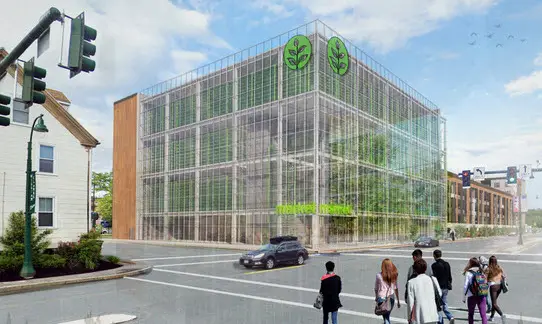Construction has officially begun on the Vertical Harvest building in Westbrook, Maine. According to reports, the indoor farm will support the expansion of the regional food industry. This will be done by growing food that isn’t cultivated in the state during the winter.
Within two years, Vertical Harvest, a business based in Jackson, Wyoming, will have finished developing that portion of the project. Utility problems and the discovery of a ledge under the site caused a delay in the construction of the additional components. The components include 50 to 60 apartments and a 400-space parking garage. The city will be able to consolidate its downtown parking thanks to the garage. This will free up additional lands for business and residential development.
Also Read: Ferland EDDC building at University of Maine open after 2byears construction
In the past two weeks, a steel building has risen close to Mechanic Street. This is the first indication that a four-story indoor farm, whose developer claims will employ close to forty individuals with intellectual disabilities and produce millions of pounds of microgreens for the region’s rapidly developing food scene, is on its way up.
Remarks on the Vertical Harvest project in Maine
“The construction of the parking garage will have a significant economic impact on our downtown. We sincerely hope that residents of our downtown can patronize the establishments there. Since there is a housing issue in the area, the main objective is to have a residential development in the downtown area, according to Westbrook Mayor Mike Foley.
According to Nona Yehia, CEO of Vertical Harvest, the farm will produce over 2 million pounds of microgreens annually for use in restaurants, hospitals, and educational institutions. Yehia also intends for 40% to 50% of workers at the Westbrook location to be people with intellectual and physical disabilities, emphasizing capacity rather than inability.
“It can augment traditional agriculture, but it will never completely replace it. It eliminates environmental stresses and creates a regulated environment inside a secure area, according to Yehia. These environmental constraints might range from severe winters to droughts.
